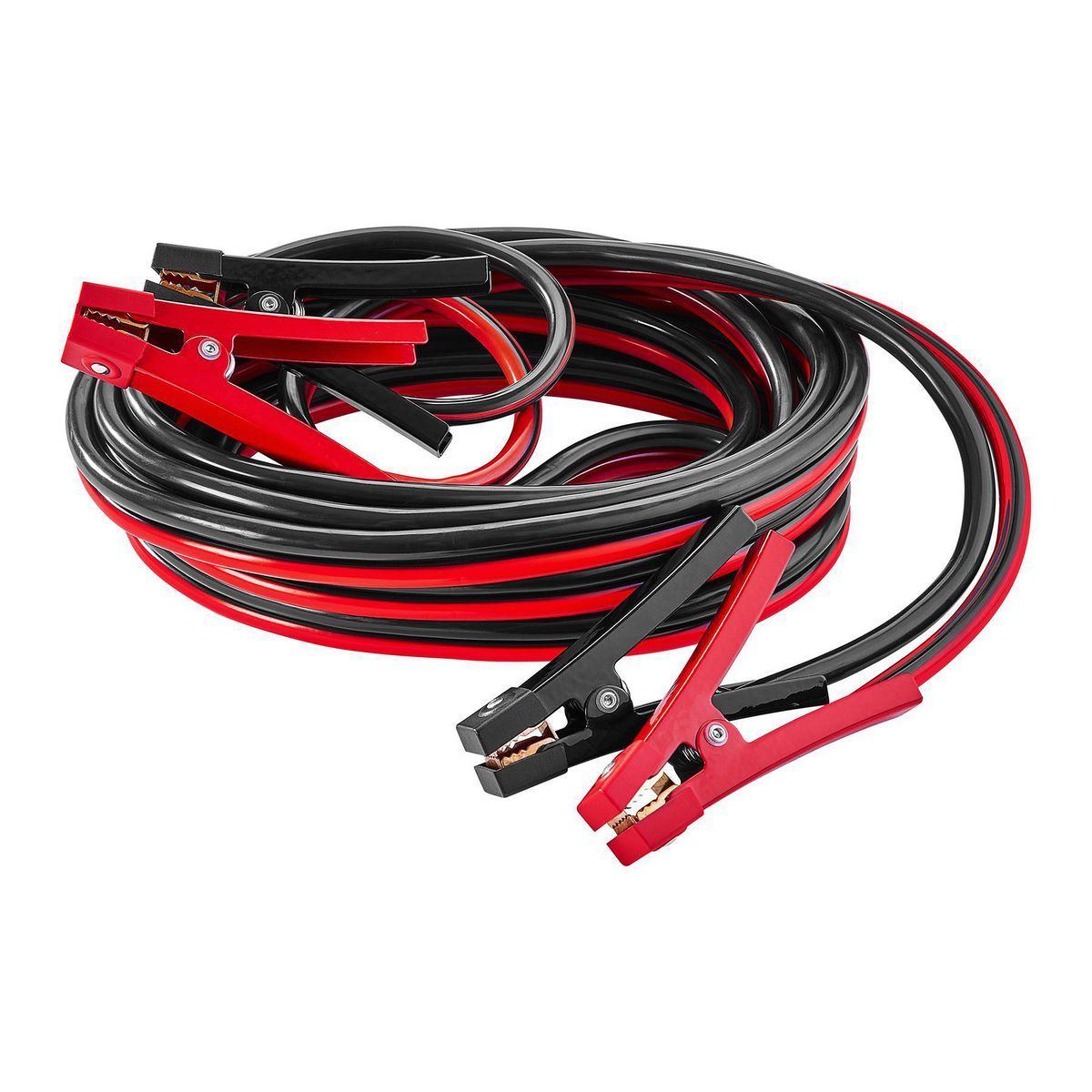There are over 6 million automobile accidents a year in the United States, and that’s only the ones that get reported. Other driving-related dangers include running out of gas a, flat tire, engine trouble, and poor visibility in bad weather. You can alleviate these issues and keep yourself safe by being prepared for roadside emergencies.
Being prepared will help keep you safe, and it can provide you with peace of mind and save time and money in an emergency. Roadside assistance is a useful resource, but you can easily replace a flat tire yourself with the right tools and knowledge. You may even be back on the road faster than you would have if you had waited for help, especially if you are driving in a remote area.
Below are seven things you should always keep in your car in case of an emergency.
1. Jumper Cables
A drained car battery is annoying, but it’s an issue that can easily be resolved. The battery in your vehicle may drain for a variety of reasons. Most commonly, it is due to electrical devices, such as the lights or radio being left on while the ignition is off. Batteries can also die in extreme weather, usually in cold conditions with temperatures below 10 degrees Fahrenheit. They can give out completely after about five years of use. You may need to replace a drained battery eventually, but you can temporarily fix the problem with a set of jumper cables.
The cables should be in good condition and no longer than 20 feet. You can buy longer cables, but these may not work as well. The set has red and black cables. Once you have secured help from someone with a working battery, attach the red cables to the positive terminals and the black cables to the negative terminals. You’ll then need to ground the cables’ black clip to a metal surface under the hood, but not too close to the battery. Have the person helping you start their car and let it run for a few minutes before trying to start your car.
2. Tire Gauge
A tire gauge won’t necessarily be useful you in an emergency, but with regular use it can extend the life of your tires and improve braking, handling, and fuel economy. Keep one in your glove box and routinely check each tire’s air pressure. Tires for most passenger vehicles should have 30-35 pounds per square inch (PSI) of air pressure. On average, tires lose 1 PSI of air pressure each month. You can add air at any gas station, usually for free.
3. Tire Sealant
If you get a flat tire, especially along the highway, it can be helpful to know how to change a tire. Some models, however, don’t come equipped with a spare. If roadside assistance isn’t an immediate option, you could be waiting for a while to get back on the road.
You can, however, quickly and temporarily repair a flat yourself with tire sealant. These products can typically seal punctures up to one-quarter inch in diameter by injecting aerosol sealant via a valve stem to patch the hole and re-inflate the tire. You can buy tire sealant for less than $10. You will, however, need to drive to a mechanic to have them properly patch or repair the tire.
4. Traffic Warning Kit
If you do get a flat tire on the road, hopefully it happens during the day, so you and your car are visible to other motorists. At night, put on your hazard lights to make yourself and the vehicle visible if you must pull over. In the off chance that your hazards aren’t working, you should also carry a traffic warning kit in your car. Place these reflective triangles a good distance behind the vehicle to give other drivers a chance to safely move out of the way.
Keep a flashlight in your glovebox to provide ample lighting when changing a flat or looking at your engine in the dark.
5. Ice Scraper and Brush
If you live in the northern latitudes, you probably already know the importance of keeping an ice scraper and brush in your vehicle. If your car breaks down during cold and icy conditions, you’ll need a scraper to clear the windshield and have good visibility when it’s ready to get back on the road. It’s also helpful to have in non-emergency situations, such as to brush snow or scrape ice off the vehicle after it has been parked for a while.
6. USB Cord
Your mobile phone might be one of your most important resources in driving-related emergencies. You can call roadside assistance or let friends and family know about a problem. Your phone can help you out of difficult situations and provide peace of mind. That is, if it’s charged. Most newer vehicles have USB charging ports, so be sure to keep a USB cord in your car so that you can charge your phone when needed.
7. Premade Emergency Kit
Rather than purchasing these and other individual items, you can cover your bases by purchasing premade emergency kits. These typically include the items listed above as well as a first aid kit, tow ropes, and a fire extinguisher. You can also buy winter emergency kits, which include a foldable shovel, hand warmers, and extra clothing.
